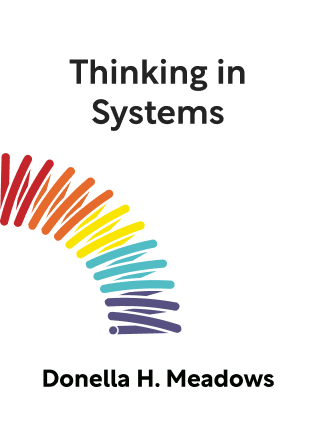

This article is an excerpt from the Shortform summary of "Thinking in Systems" by Donella H. Meadows. Shortform has the world's best summaries of books you should be reading.
Like this article? Sign up for a free trial here .
What are stocks and flows and what is their role in systems? How do stock and flows work?
Stocks are the tangible elements of a system, and flows are the means by which the stocks change. Understanding stocks and flows can help you understand the inputs and outputs of a system, and therefore better understand the system itself.
Read more about stocks and flows and check out the stocks and flows diagram.
What Are Stocks and Flows?
A stock represents the elements in a system that you can see, count or measure. It can be commonly thought of as an inventory, a store, or a backlog.
Flows are the means by which the stocks change over time. Inflows increase the level of stock, while outflows decrease the level of stock.
Let’s take a simple system: a bathtub.
- The stock is the amount of water in the tub.
- The inflow is water coming from the faucet into the tub. This raises the stock.
- The outflow is the drain that removes water from the tub. This decreases the stock.
This can be drawn on a stocks and flows diagram, as here:
The clouds signify wherever the inflow comes from, and wherever the outflow goes to. To simplify our understanding of a system, we draw boundaries for what’s important for understanding the system, and ignore much of the outside world. This stocks and flows diagram serves as an example for how things work.
Many systems are analogous to the bathtub:
- In fossil fuels, the stock is the reservoir of fossil fuels. Mining lowers the stock, while natural processes increase the stock.
- The world population is a stock of people. The population grows with births and shrinks with deaths.
- Your self-confidence is a stock. It grows with compliments and personal triumphs. It shrinks with project failures and insults.
Where We Focus
As humans, when we look at systems, we tend to focus more on stocks than on flows. (Shortform note: This might be because the stock is much more obvious and tangible than the flows. This is also related to how elements in a system are more easily recognizable than the Interconnections.)
Furthermore, we tend to focus more on inflows than on outflows.
- When thinking about how the world population is growing, we naturally think about how increasing births must be driving the trend. We think less about how preventing death through better medical care also grows the population.
- Likewise, a company that wants to increase its headcount does so instinctively by hiring more people. It doesn’t often think as hard about how to reduce the outflow of people who quit or are fired.
Changing the outflows can have very different costs than changing the inflows.
Properties of Stocks and Flows
Stocks take time to change. In a bathtub, think about how quick it is to change the inflow or outflow. It takes just a second to turn on the faucet. It takes minutes to fill the tub.
Why do stocks change so gradually? Because it takes time for the flows to flow. As a result, stocks change slowly. They act as buffers, delays, and lags. They are shock absorbers to the system.
From a human point of view, this has both benefits and drawbacks. On one hand, stocks represent stability. They let inflows and outflows go out of balance for a period of time. A stock buys you time to solve the problem and experiment.
- A car’s gas tank gives the car operational stability. The engine can draw gas from the tank as it needs it. In contrast, imagine if you had to provide gas every second to the car at exactly the moment it needed it, or the engine would shut down. The storage tank gives the car system stability.
- Your bank account stores money and gives your life stability. If you get fired from your job, the inflow of money will stop, but you can take money from your stock to continue living and figure out how to solve the problem.
- Likewise, inventories for retail stores help them deal with different rates of buying. Water reservoirs help farmers deal with fluctuations in rainfall.
On the other hand, a slowly-changing stock means things can’t change overnight.
- If we cut down all the trees in a rainforest, they can’t be planted overnight. They can only be replenished as quickly as the inflow of new trees.
- If a population’s skills become meaningless because of technology, you can’t re-educate the workforce instantaneously. It takes time for the information to work its way through the system and to flow to the population.
If you understand that stocks take time to change, you’ll have more patience to guide the system to good performance.
Decisions Influence Stocks
As agents in a system, we make decisions to adjust the level of a stock to where we think it should be.
- Your financial decisions depend on the stock of money in your bank account. If you feel you have too little money, you decrease spending and increase earnings to increase the stock of money.
- If a store has too much inventory, it runs sales or increases ads to decrease stock.
If you look at the world through a systems lens, you’ll see a large number of stocks, and flows that adjust the levels of stocks.

———End of Preview———
Like what you just read? Read the rest of the world's best summary of Donella H. Meadows's "Thinking in Systems" at Shortform .
Here's what you'll find in our full Thinking in Systems summary :
- How the world, from bathtub faucets to fish populations, can be seen as simple systems
- The key system traps that hold back progress, such as escalating arms races and policy addiction
- Why seeing the world as systems can give you superpowers in work and life






